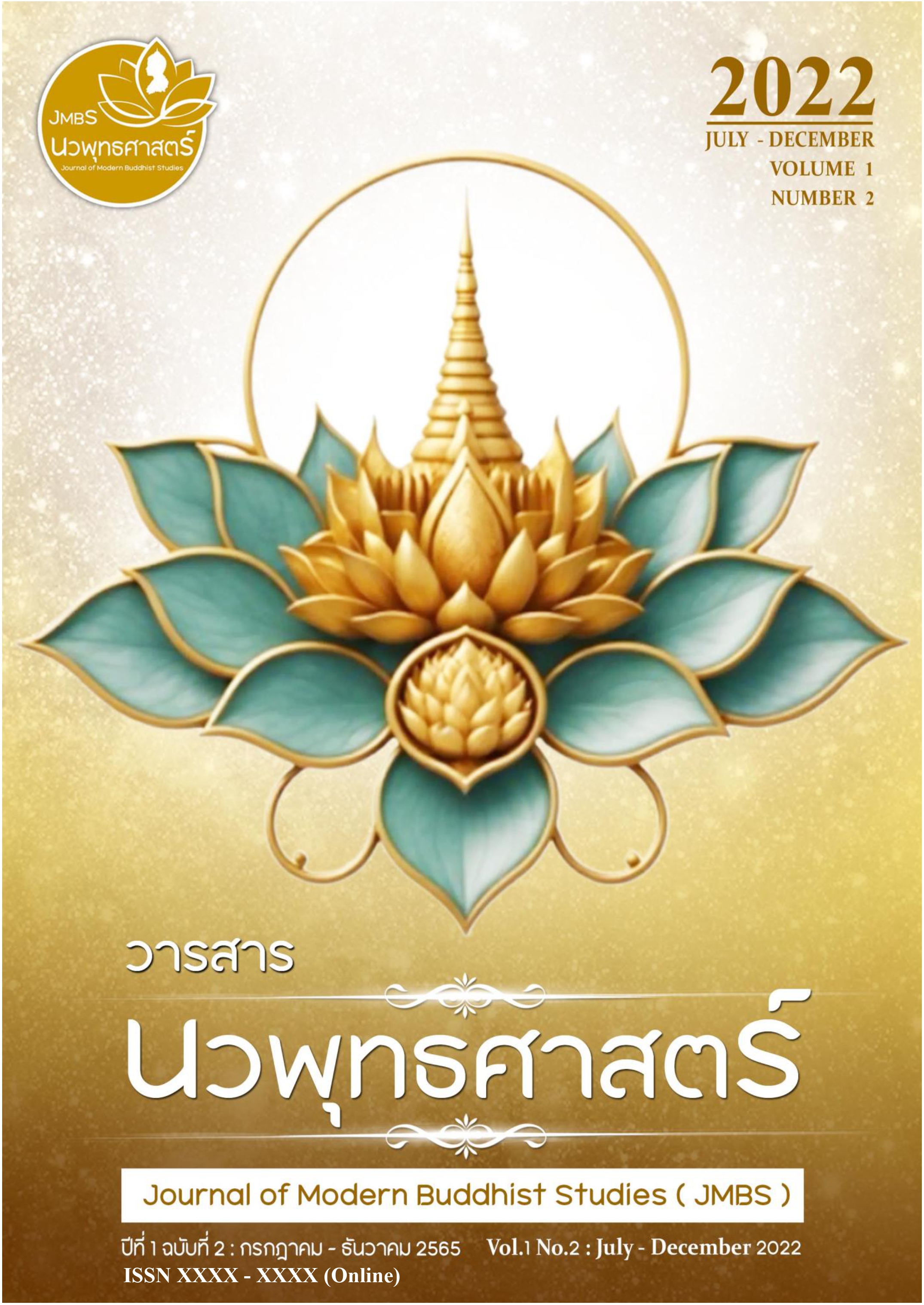AN ANALYTICAL RIGHT SPEECH FOR APPLICATION OF EDUCATIONAL INSTITUTIONS
Keywords:
Right Speech, Its Application in Educational Institutions, and Right Speech in the Context of Educational InstitutionsAbstract
This research aims to study the principle of Right Speech (Samma Vaca) in Buddhist scriptures and analyze its application in educational institutions. This is qualitative research that utilizes three analytical methods: (1) descriptive analysis, (2) interpretation, and (3) synthesis. The study employs content analysis techniques within the context to present an analysis of the principle of Right Speech for application in educational institutions. The findings are as follows: 1. Application of the Principle of Right Speech in Educational Institutions:It is essential to understand that human society is based on communication through speech. Speech serves as a tool to help individuals understand each other's needs and emotions. The key aspects of applying Right Speech in educational contexts are as follows: Truthful speech – Maintaining truthfulness and sincerity in communication, which fosters trust and a sense of integrity. Honesty is a foundation of respect and honor in human relationships. Speech that promotes harmony – Using constructive words that encourage unity and resolve conflicts, often expressed through kind and gentle language (Piyaa Vaca). Harmless speech – Speaking in a gentle, pleasing manner that avoids provoking anger or discomfort. This includes using pleasant tones and phrasing that foster goodwill and love. Moderate and appropriate speech – Speaking at the right time and with mindfulness, ensuring that words are truthful and relevant. This requires the speaker to think before speaking and to consider the appropriateness of the message. 2. The Relationship Between Educational Institutions and the Principle of Right Speech in Buddhist Scriptures:The principle of Right Speech, as described in Buddhist teachings, aims to promote the well-being of many. After attaining enlightenment, the Buddha traveled to spread happiness and wisdom for the benefit of the masses. Similarly, educational institutions, when guided by the principle of Right Speech, focus on achieving their goals by fostering collaboration and emphasizing academic excellence. Academic work, being central to achieving student outcomes as outlined in the curriculum, aligns with the principles of Right Speech to improve the quality of education and help students achieve their educational goals.
References
ฉวีวรรณ สุวรรณาภาและคณะ (2547). “ความพึงพอใจของนิสิตต่อการจัดการเรียนการสอนหลักสูตรประกาศนียบัตรวิชาชีพครู”. รายงานการวิจัย. แพร่: มหาวิทยาลัยมหาจุฬาลงกรณราชวิทยาลัย วิทยาเขตแพร่.
ธนัชกร กีรติเสถียร (2550). “ศึกษาการใช้วาจาเพื่อการสร้างสรรค์ในพระพุทธศาสนาเถรวาท”. วิทยานิพนธ์พุทธศาสตรมหาบัณฑิต. บัณฑิตวิทยาลัย: มหาวิทยาลัยมหาจุฬาลงกรณราชวิทยาลัย.
ธรณิศวร์ จิตขวัญ (2542). “ความคิดเห็นของผู้ปกครองต่อการบริหารโรงเรียนประถมศึกษา สังกัดสำนักงานการประถมศึกษาจัดหวัดนนทบุรี”. วิทยานิพนธ์ศึกษาศาสตรมหาบัณฑิต. บัณฑิตวิทยาลัย: มหาวิทยาลัยเกษตรศาสตร์.
ประสาน- ทิพวรรณ หอมพูล (2537). จิตวิทยาทั่วไป. กรุงเทพมหานคร : พิศิษฐ์การพิมพ์.
แผนพัฒนาเศรษฐกิจและสังคมแห่งชาติ ฉบับที่ 12 (2565). เด็กและเยาวชน จะได้อะไรจากแผนพัฒนาฉบับที่ 12: สื่ออิเล็กทรอนิกส์และโทรคมนาคม. สืบค้นข้อมูลจาก http://planning.dld.go.th/th/ images/ stories/section-5/2561/strategy09.pdf.
พระธรรมปิฎก (2551). พจนานุกรมพุทธศาสตร ฉบับประมวลธรรม. พิมพ์ครั้งที่ 12. กรุงเทพมหานคร: โรงพิมพ์มหาวิทยาลัยมหาจุฬาลงกรณราชวิทยาลัย.
พระธรรมปิฎก (2549). พุทธธรรม ฉบับปรับปรุงและขยายความ. พิมพ์ครั้งที่ 11. กรุงเทพมหานคร: สหธรรมิก.
พระธรรมปิฎก (2552). เครื่องวัดความเจริญ ของชาวพุทธ (อารยวัฑฒิ). กรุงเทพมหานคร: โรงพิมพ์สหธรรมิก.
พระธรรมปิฎก (2554). การเสริมสร้างคุณลักษณะเด็กไทย. พิมพ์ครั้งที่ 2. กรุงเทพมหานคร: โรงพิมพ์พระพุทธศาสนาของธรรมสภา.
พระพรหมคุณากรณ์ (2552). พุทธธรรม ฉบับปรับปรุงและขยายความ. พิมพ์ครั้งที่ 11. กรุงเทพมหานคร: โรงพิมพ์มหาจุฬาลงกรณราชวิทยาลัย.
พระมหาสุรวุฒิ จนฺทธมฺโม (2557). “การศึกษาเรื่องสัมมาวาจาในพระพุทธปรัชญาเถรวาท”. วิทยานิพนธ์ศาสนศาสตรมหาบัณฑิต. บัณฑิตวิทยาลัย: มหาวิทยาลัยมหาจุฬาลงกรณราชวิทยาลัย.
พระสัทธัมมโชติกะ ธัมมาจริยะ (2539). ปรมัตถโชติกะ มหาอภิธัมมัตถสังคหฎีกา ปริจเฉทที่ 5 เล่ม 2 กัมมจตุกกะ-มรณุปปัตติจตุกกะ. กรุงเทพมหานคร : โรงพิมพ์ทิพยวิสุทธิ์.
สงวน สุทธิเลิศอรุณและคณะ (2522). จิตวิทยาสังคม. กรุงเทพมหานคร : ชัยศิริการพิมพ์.
สมโภชน์ เอี่ยมสุภาษิต ดร. (2526). การปรับพฤติกรรม. กรุงเทพมหานคร : โอเดียนสโตร.
สุภาวดี หาญเมธี (2558). EF ภูมิคุ้มกันชีวิตและป้องกันยาเสพติด คู่มือสำหรับเด็กอนุบาล. กรุงเทพมหานคร: สำนักพิมพ์รักลูกบุ๊คส์.

Additional Files
Published
How to Cite
Issue
Section
License

This work is licensed under a Creative Commons Attribution-NonCommercial-NoDerivatives 4.0 International License.




